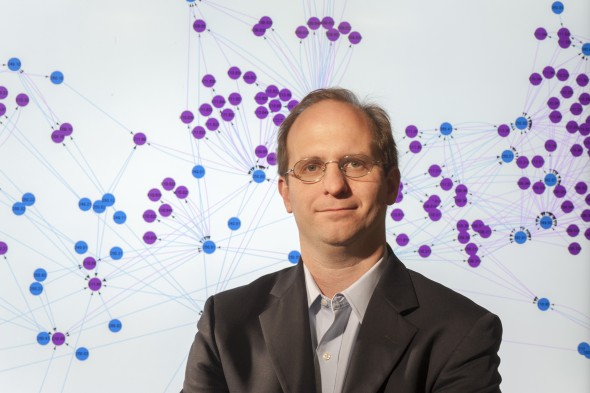Analyzing coding system to improve patient safety

Andrew Boyd studies the difficult transition between versions of the International Classification of Diseases. — Photo: Roberta Dupuis-Devlin
Andrew Boyd’s research may already have an impact on your health care.
For most of the past five years, he has analyzed the difficulty of the transition from Version 9 to Version 10 of the International Classification of Diseases — the system doctors use to code each diagnosis and procedure for each patient.
In the U.S., the deadline for the change was Oct. 1. The U.S. version raised the number of codes from 14,000 in ICD-9 to 80,000 in ICD-10.
“His analyses have highlighted gaps in ICD‐10 that may affect patient safety and that may have economic implications,” wrote Mark A. Musen, chief of biomedical informatics research at Stanford University, about Boyd’s nomination for the award.
“These results are highly significant, because the conventional wisdom has been that, because ICD‐10 is so granular and so extensive in its coverage of clinical concepts, there should be no major downside in the migration to the new system.”
The American Journal of Emergency Medicine ranked Boyd’s article among its five most read for seven months. Journalists from many medical publications have interviewed Boyd about such pitfalls as “crosswalk” computer files that allow cross-coding as the 40-year-old ICD-9 gave way to the exponentially more complex ICD-10.
“You miss data going backward,” said Boyd, assistant professor of biomedical and health information sciences. “And some codes map backward, but not forward.”
Some hospitals maintain dual-coded data at twice the expense, he said.
To explain his research simply, it “shows how the ICD-10 is more complex than ICD-9, shows how to identify the hard parts and visualizes the hard parts,” he said. One visualization showed the linear pattern of one-to-one mapping at the bottom, morphing quickly into a chaotic pattern of cross-coding at the top.
Boyd, with collaborators affiliated with a University of Arizona research lab, devised a conversion tool to simplify the conversion.
“And we gave the software away for free,” he said. “Our website has had tens of thousands of hits.”
Boyd has conducted research with nearly all of UIC’s health science colleges. In a study to be published next year, he’s found that doctors use only about 20 percent of nursing terms. He’s looking at the ramifications using the same analytic method as in his ICD study.
